Bending Properties of Zigzag-Shaped 3D Woven Spacer Composites: Experiment and FEM Simulation
Abstract
:1. Introduction
2. Experiment
2.1. Design and Weaving of Fabrics
2.2. Fabrication of Composites
2.3. Testing of Composites
3. Results and Discussion
3.1. Bending Load–Displacement Curves of Composites with Different Directions
3.2. Bending Load–Displacement Curves of Composites with Different Numbers of Weaving Cycle
3.3. Bending Load–Displacement Curves of Composites with Different Heights
3.4. Bending Properties of Composites: Experiment and FEM Simulation
3.5. Failure Mode and Mechanism
4. Conclusions
Author Contributions
Funding
Conflicts of Interest
References
- Chen, X.G.; Taylor, L.W.; Tsai, L.J. An overview on fabrication of three-dimensional woven textile preforms for composites. Text. Res. J. 2011, 81, 932–944. [Google Scholar] [CrossRef]
- Li, M.; Wang, S.; Zhang, Z.; Wu, B. Effect of structure on the mechanical behaviors of three-dimensional spacer fabric composites. J. Appl. Compos. Mater. 2009, 16, 1–14. [Google Scholar] [CrossRef]
- Mountasir, A.; Hoffmann, G.; Cherif, C. Development of weaving technology for manufacturing three-dimensional spacer fabrics with high-performance yarns for thermoplastic composite applications: An analysis of two-dimensional mechanical properties. J. Text. Res. J. 2011, 81, 1354–1366. [Google Scholar] [CrossRef]
- Badawi, M.S.S.S. Development of the weaving machine and 3D woven spacer fabric structures for lightweight composites materials. Ph.D. Thesis, Technischen Universität Dresden, Dresden, Germany, July 2007. [Google Scholar]
- Gu, P. The weaving principle and upper machine condition of the spacer 3D woven fabric. J. Nantong. Text. Vocational. Technol. Colle. 2007, 7, 1–3. [Google Scholar]
- Liu, J.; Jiang, H. Bending property of glass-fiber composite reinforced by 8-shape 3D woven fabric pretreated with hypo-atmospheric -pressure plasma. J. Ind. Text. 2011, 41, 174–182. [Google Scholar] [CrossRef]
- Karahan, M.; Gül, H.; Ivens, J. Low velocity impact characteristics of 3D integrated core sandwich composites. J. Text. Res. J. 2012, 82, 945–962. [Google Scholar] [CrossRef]
- Li, D.S.; Zhao, C.Q.; Jiang, L.; Jiang, N. Experimental study on the bending properties and failure mechanism of 3D integrated woven spacer composites at room and cryogenic temperature. J. Compos. Struct. 2014, 111, 56–65. [Google Scholar] [CrossRef]
- Matthieu, G.; Mohamed, S.; Constantinos, S. Transverse Crack Detection in 3D Angle Interlock Glass Fibre Composites Using Acoustic Emission. J. Mater. 2016, 9, 1–20. [Google Scholar]
- Lv, L.H.; Zhang, X.F.; Liu, G.B.; Qian, Y.; Ye, F. Mechanical properties of 3d woven basalt fiber composite materials: experiment and fem simulation. J. Fiber. Sci. Technol. 2016, 72, 33–39. [Google Scholar] [CrossRef]
- Lv, L.; Zhang, X.; Yan, S.; Qian, Y.; Ye, F. Bending properties of T-shaped 3-D integrated woven composites: experiment and FEM simulation. J. Fiber. Sci. Technol. 2017, 73, 170–176. [Google Scholar] [CrossRef]
- Lv, L.; Huang, Y.; Cui, J.; Qian, Y.; Ye, F. Bending properties of three-dimensional honeycomb sandwich structure composites: experiment and Finite Element Method simulation. J. Text. Res. J. 2017, 88, 2024–2031. [Google Scholar] [CrossRef]
- Zhang, Z.Q.; Jin, L.M.; Zhang, Y.; Niu, Z.; Sun, B. FEM Simulation of Three-dimensional Angle Interlock Woven Composite under low-velocity Impact. J. Fiber. Compos. 2011, 3, 12–16. [Google Scholar]
- Zhou, H.L.; Pan, Z.X.; Gideon, R.; Gu, B.; Sun, B. Experimental and numerical investigation of the transverse impact damage and deformation of 3-D circular braided composite tubes from meso-structure approach. J. Compos. B 2016, 86, 243–253. [Google Scholar] [CrossRef]



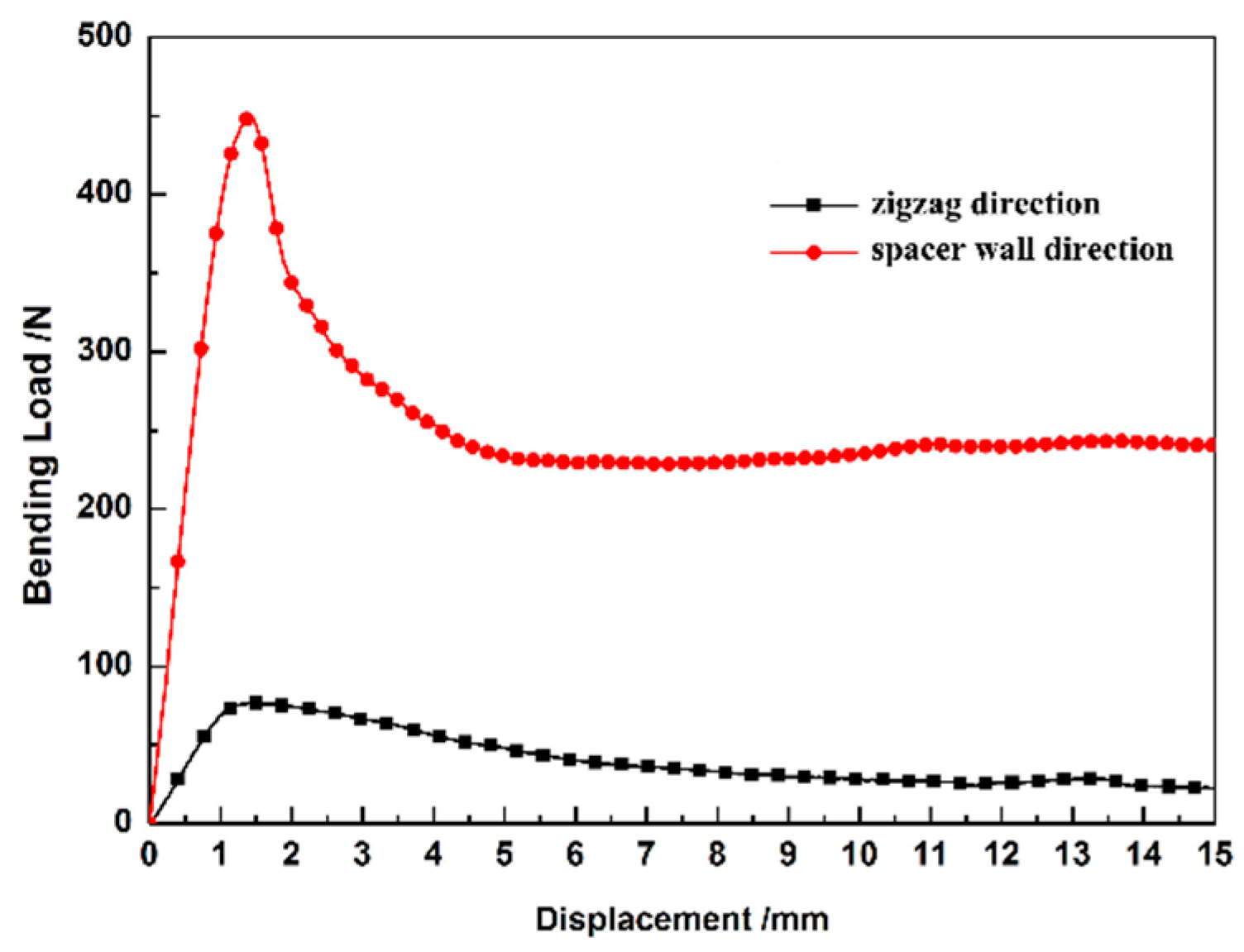
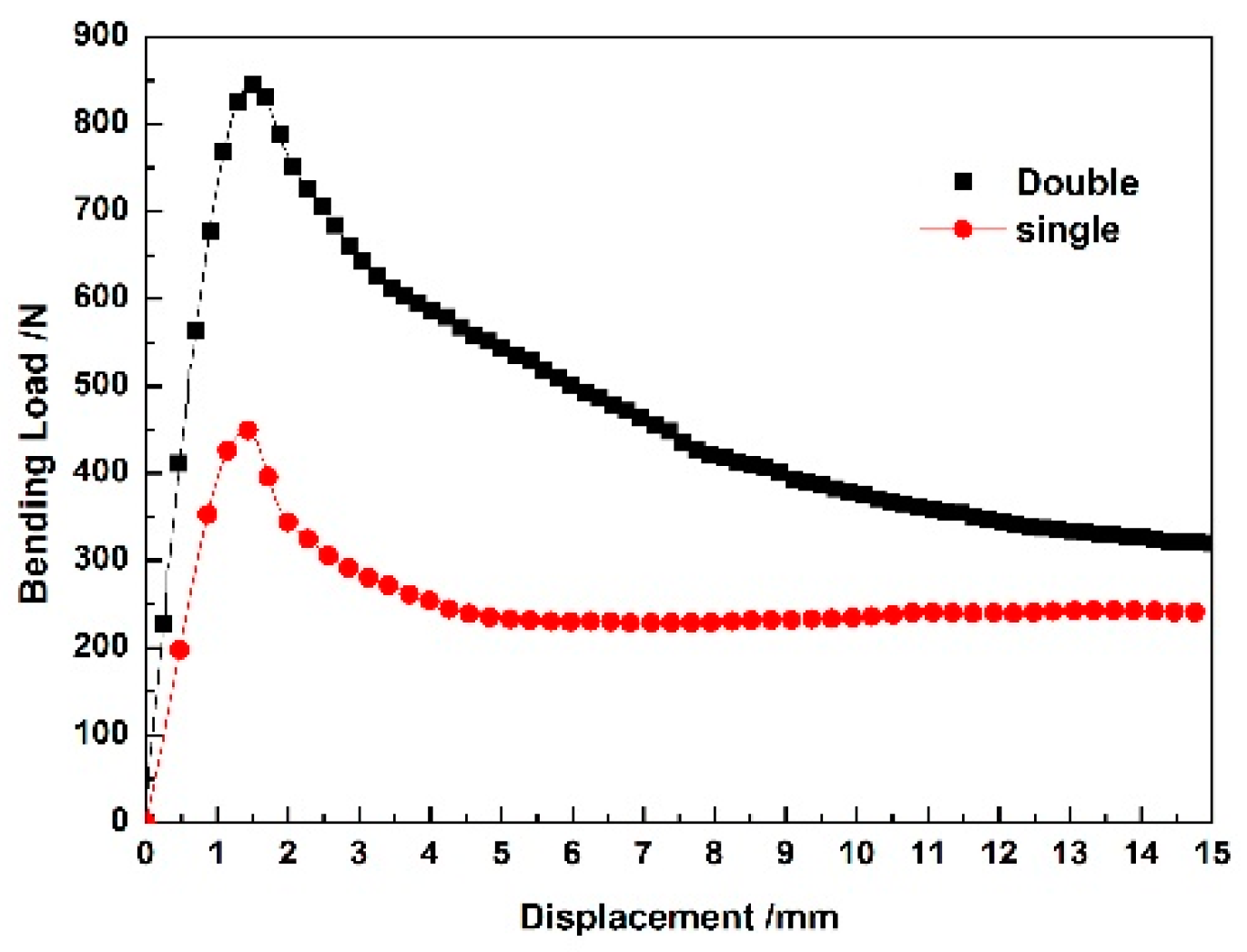

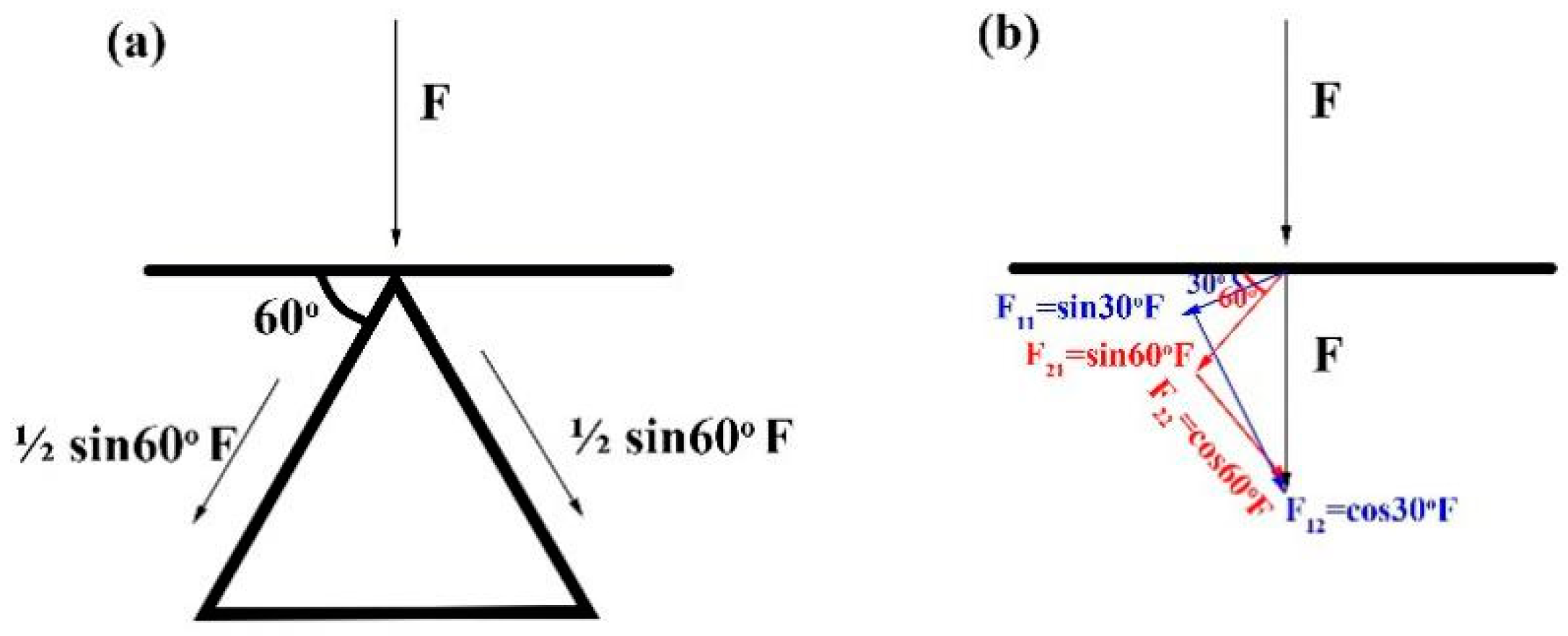

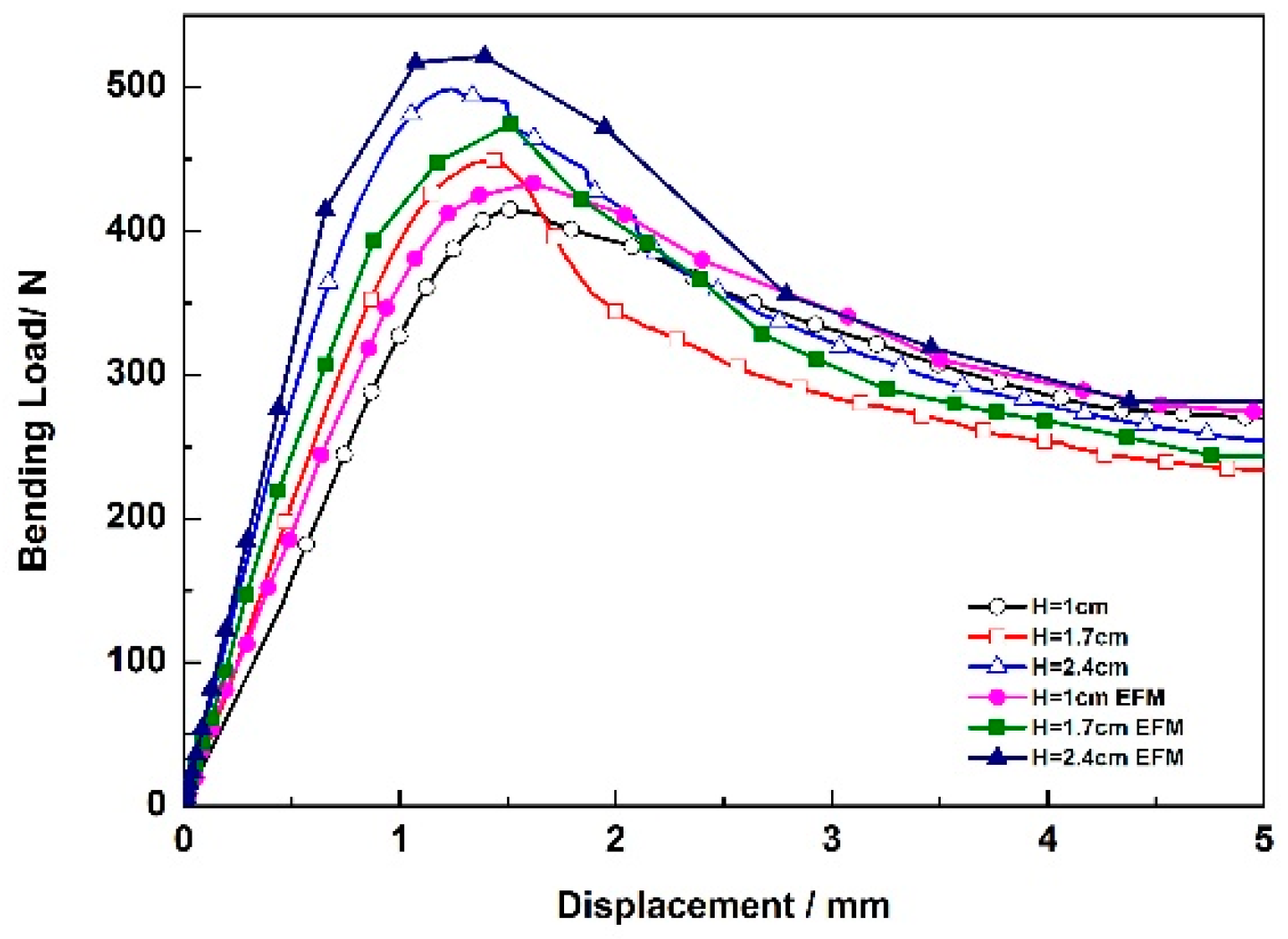
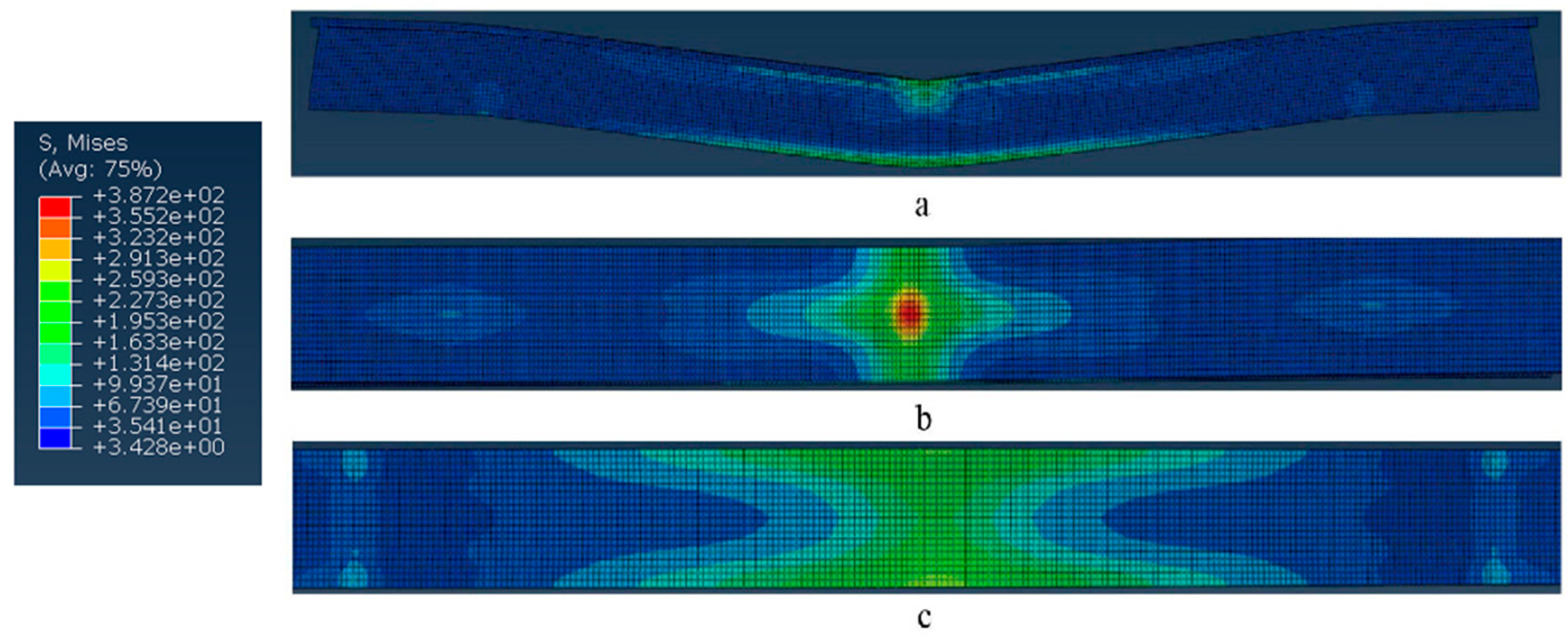
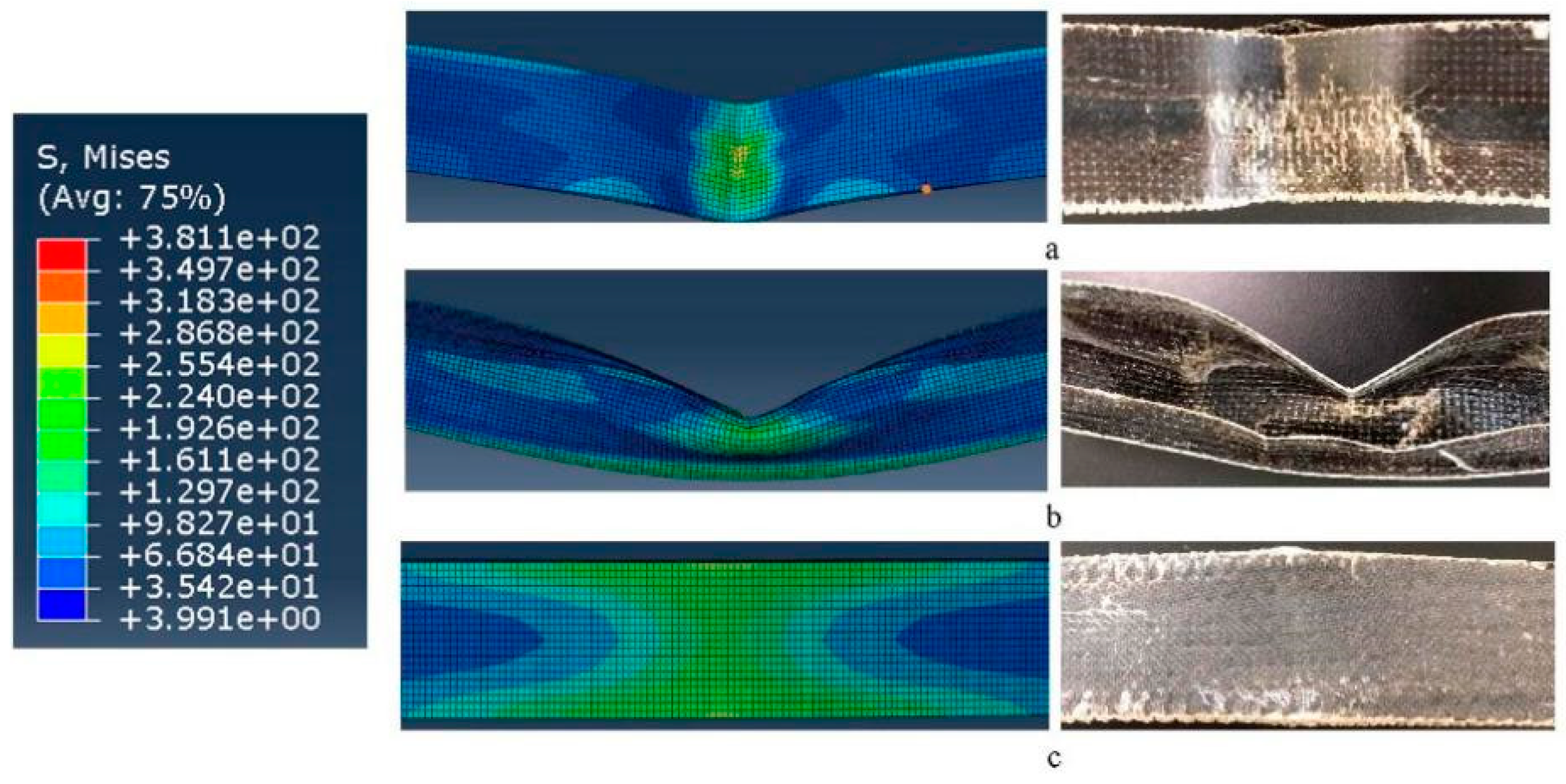
| Cross-Sectional Shapes | Heights (mm) | Warp Density (yarn per 100 mm) | Weft Density (yarn per 100 mm) | Reed Counts (reed dent per 100 mm) | Yarn Counts Per Reed | Total Number of Warp Yarns |
|---|---|---|---|---|---|---|
| zigzag | 10, 17, 24 | 60 | 1181 | 30 | 6 | 360 |
| Heights/mm | E11/ GPa | E22/ GPa | E33/ GPa | V12 | V23 | V13 | G12/ GPa | G13/ GPa | G23/ GPa |
|---|---|---|---|---|---|---|---|---|---|
| 10 | 32 | 9.79 | 9.79 | 0.21 | 0.21 | 0.3 | 9.56 | 9.56 | 21 |
| 17 | 149.9 | 44.5 | 44.5 | 0.22 | 0.22 | 0.3 | 43.45 | 43.45 | 95.6 |
| 24 | 158.9 | 47.1 | 47.1 | 0.25 | 0.25 | 0.3 | 46.06 | 46.06 | 101.34 |
© 2019 by the authors. Licensee MDPI, Basel, Switzerland. This article is an open access article distributed under the terms and conditions of the Creative Commons Attribution (CC BY) license (http://creativecommons.org/licenses/by/4.0/).
Share and Cite
Zhu, L.; Lyu, L.; Zhang, X.; Wang, Y.; Guo, J.; Xiong, X. Bending Properties of Zigzag-Shaped 3D Woven Spacer Composites: Experiment and FEM Simulation. Materials 2019, 12, 1075. https://doi.org/10.3390/ma12071075
Zhu L, Lyu L, Zhang X, Wang Y, Guo J, Xiong X. Bending Properties of Zigzag-Shaped 3D Woven Spacer Composites: Experiment and FEM Simulation. Materials. 2019; 12(7):1075. https://doi.org/10.3390/ma12071075
Chicago/Turabian StyleZhu, Liming, Lihua Lyu, Xuefei Zhang, Ying Wang, Jing Guo, and Xiaoqing Xiong. 2019. "Bending Properties of Zigzag-Shaped 3D Woven Spacer Composites: Experiment and FEM Simulation" Materials 12, no. 7: 1075. https://doi.org/10.3390/ma12071075




